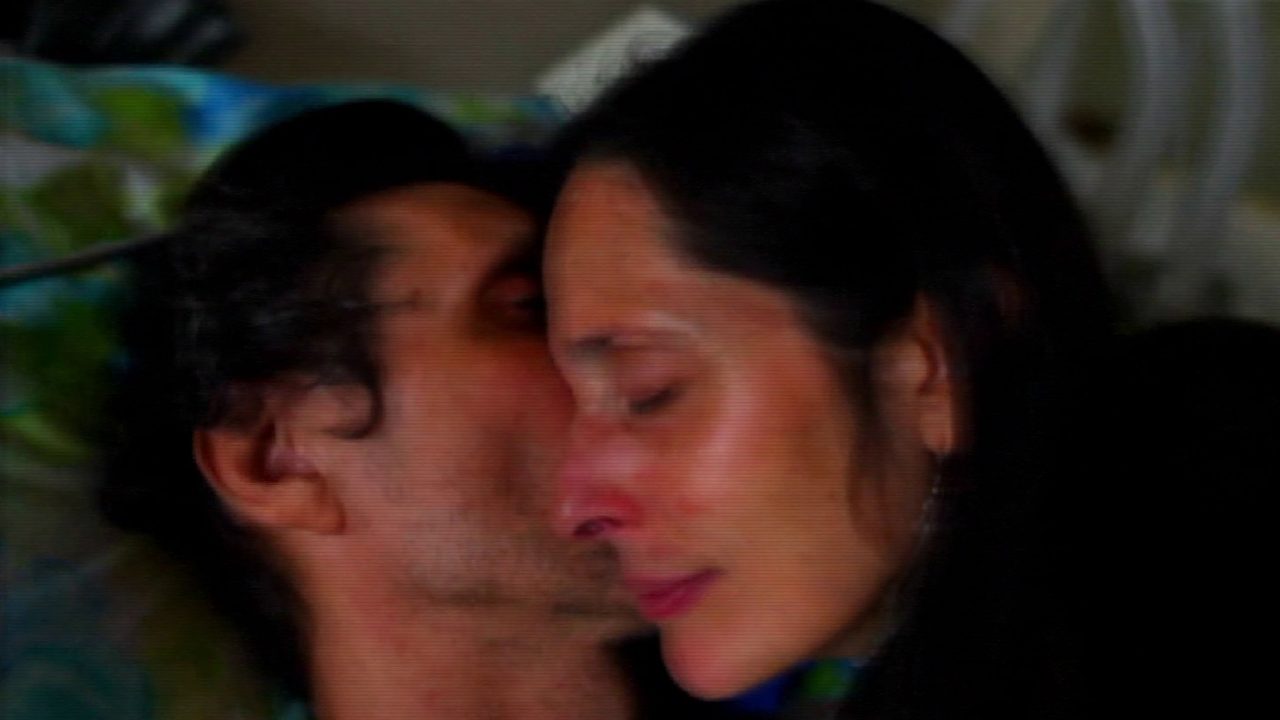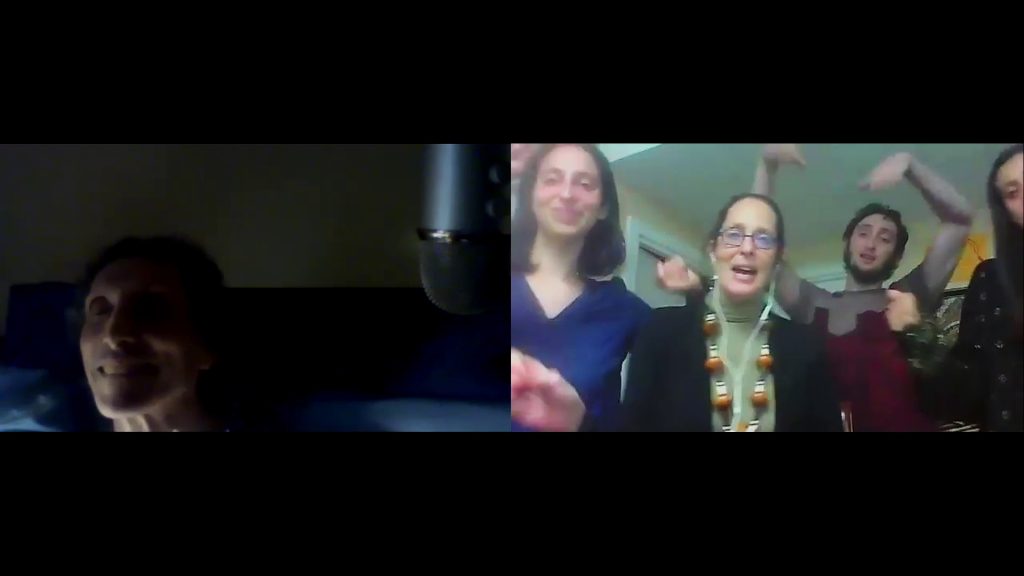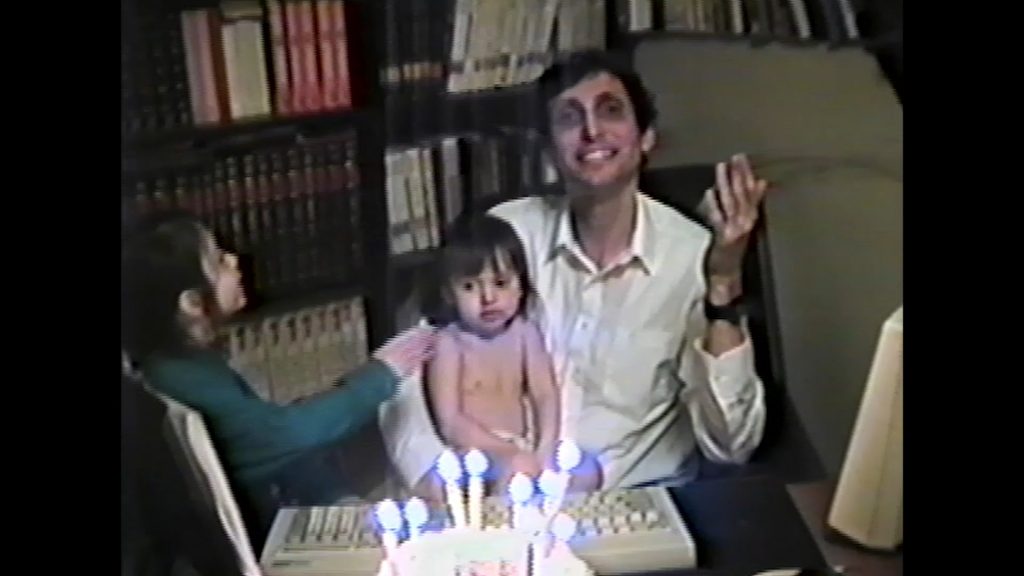
Perfecting the Art of Longing: A Journey Through Memory, Family and Faith
Perfecting the Art of Longing: A Journey Through Memory, Family and Faith
In 2011, Rabbi Ronnie Cahana suffered a devastating brainstem stroke that left him “locked in”, only able to communicate through the blinking of his eyes. In the years that followed, the beloved poet and community leader regained some power of speech but remained paralyzed, requiring round-the-clock assistance at a long-term-care facility in Montreal, Quebec. When the pandemic lockdown hit, he found himself completely isolated and cut off from his loved ones, connecting only through screens.
Using footage from security cameras, as well as video-call footage and home-video archives, Perfecting the Art of Longing is acclaimed filmmaker Kitra Cahana’s powerful collaboration with her father. Learn more about this award-winning short film through a conversation with Kitra Cahana.
What was it like to make this film?
Kitra: Anyone who lives, works or has a loved one in long-term care knows how terrifying the early days of the pandemic were. Early on, we were hearing reports from facilities in Spain, the US and then here, in Montreal, where the understaffing had become so severe (due to sick or scared workers) that patients were completely abandoned, left without anyone to care for them. In many of these facilities, residents were evacuated by the military and many died completely preventable deaths.
In Canada, the pandemic strained an already underfunded and understaffed system, and we watched with horror as the death toll began to rise. It is against this backdrop that I decided to make this film, which in many ways became my creative retreat away from the anxiety and grief that we all lived through. Although I could not enter the building of my father’s facility, filming him remotely allowed me to focus my eye in an almost meditative state on the everyday acts of caregiving.
My daily conversations, where I interviewed him about his experience living in isolation and solitude, felt meaningful and purposeful. My father clings to his joy as a means of survival, and as such didn’t connect as much to the fears and anxieties that I felt from outside the building, so the film was a kind of middle ground for us to try to create something beautiful together that spoke to what we were both living through.

Since his brainstem stroke in 2011, you have collaborated with your father on several creative projects, such as your photography series Still Man and Perfecting the Art of Longing. How have you approached this ongoing collaboration with your father? Do you see these works as speaking to one another?
Kitra: In certain ways, I see these projects as one and the same. They are extensions of each other, albeit in very distinct visual languages. The Still Man series explores and attempts to visualize the inner spiritual dimension of connecting his body back to his mind through layered photographic images, whereas Perfecting the Art of Longing is expressed in pixelated video closeups of his life isolated in his room during the pandemic.
The visual language in this film is largely a meditation on the spaces, objects and landscape of care and caregiving. Our relationship, I believe, is at its best when we are in collaboration, interpreting the material of our lives into objects of beauty. I became a caregiver in my early twenties, when he had his stroke, and I have struggled with that role. Using our relationship as a point of creativity and collaboration is what has eased that struggle and made it a place of generation and creation. I don’t see this work as ever being finished with a single film or photograph.

Long-term-care facilities were the epicentre of the COVID-19 pandemic, particularly in the spring of 2020. Why are people living in long-term care during the pandemic particularly vulnerable? How have you seen care practices adapt over the course of the pandemic?
Kitra: It’s absolutely heartbreaking to say this, but I don’t think anything has improved in long-term care in Canada two years down the line. The studies have been studied, the recommendations have been made, but so far there is no political will in this country to change the status quo. It’s shameful.
You started a social action initiative called Artists 4 Long-Term Care in the early days of the COVID-19 pandemic. What is the mission of this collective? How has it evolved over the past two years?
Kitra: Artists 4 Long-Term Care is an art and storytelling initiative that aims to advocate for residents and workers living and working in long-term care. Along with my dear friend Isadora Kosofsky, who has done some of the most important immersive work over the last decade on the lives of elders in long-term care, we created this initiative because we both recognized how little artistic work exists that addresses the inner lives and value of caregivers and residents.
I feel that I’m a part of a movement advocating for the rights of domestic workers, caregivers and residents, and yet it’s a movement without many examples of storytelling and art. Every movement needs its battle cry, its iconography, its buttons and stickers, and so I wanted to do something that would create and highlight artwork that could be used by advocates in this arena and allow the people themselves to feel seen. Over the course of the pandemic, we had some pop-up exhibits and put posters around Montreal and other cities. That said, the project primarily exists on Instagram. I invite everyone to join us in making art and sharing the art.
Check us out: www.instagram.com/artists4longtermcare.
What do you think long-term-care homes can do to prepare differently for the next possible pandemic?
Kitra: As a society, we institutionalize our elders and people with disability and undervalue the backbreaking work that their caregivers (the majority of whom are from marginalized communities) do, by keeping these facilities underfunded and understaffed. If it weren’t for family caregivers and privately hired caregivers to fill in the gaps, many of these facilities would not function. I wish that in our society my father had more options. There’s no reason a younger man with disabilities shouldn’t have the resources available to him to live at home.
Watch Perfecting the Art of Longing:
Perfecting the Art of Longing, Kitra Cahana, provided by the National Film Board of Canada



